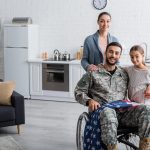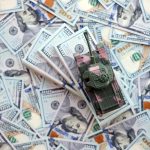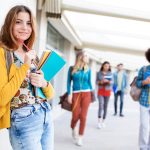
Cubital tunnel syndrome is a condition that affects the ulnar nerve, which runs along the inside of the elbow. This nerve is commonly known as the “funny bone” nerve. When it becomes compressed or irritated, it can cause pain, numbness, and tingling in the ring and little fingers, as well as weakness in the hand.
For veterans, cubital tunnel syndrome can be a result of their military service. Activities like repetitive elbow bending, direct trauma to the elbow, or prolonged pressure on the elbow during service can lead to this condition. It’s important for veterans to understand that if their cubital tunnel syndrome is service-connected, they may be eligible for VA disability benefits.
The VA recognizes cubital tunnel syndrome as a ratable condition, which means veterans can receive compensation if it’s determined to be service-related. Understanding this condition and its relationship to military service is the first step in pursuing a VA disability claim for cubital tunnel syndrome.
Symptoms and Diagnosis of Cubital Tunnel Syndrome

The symptoms of cubital tunnel syndrome can vary from mild to severe. Common signs include:
- Numbness and tingling in the ring and little fingers
- Weakness in the hand, especially when gripping objects
- Pain on the inner side of the elbow
- Aching in the forearm
- Difficulty with fine motor skills
To diagnose cubital tunnel syndrome, doctors typically perform a physical examination and may order additional tests. These can include:
- Nerve conduction studies to measure the speed of nerve signals
- Electromyography (EMG) to assess muscle function
- X-rays or MRI scans to rule out other conditions
For veterans seeking a VA rating for cubital tunnel syndrome, it’s crucial to have a clear diagnosis from a medical professional. This diagnosis, along with evidence linking the condition to military service, forms the basis of a VA disability claim.
VA Rating Criteria for Cubital Tunnel Syndrome
The VA rates cubital tunnel syndrome based on the severity of symptoms and their impact on daily life. The rating system is designed to compensate veterans for the average impairment in earning capacity resulting from service-connected disabilities.
The VA uses the Schedule for Rating Disabilities to determine the appropriate rating for cubital tunnel syndrome. Ratings are typically assigned in increments of 10%, ranging from 0% to 100%, depending on the severity of the condition.
Key factors considered in the rating process include:
- The degree of nerve impairment (mild, moderate, or severe)
- Whether the dominant or non-dominant arm is affected
- The impact on daily activities and work capabilities
- Any associated muscle weakness or atrophy
It’s important to note that the VA may consider both the orthopedic (joint-related) and neurological aspects of cubital tunnel syndrome when assigning a rating.
Understanding Diagnostic Codes for Cubital Tunnel Syndrome
The VA uses specific diagnostic codes to categorize and rate disabilities. For cubital tunnel syndrome, the most commonly used code is 8516, which relates to paralysis of the ulnar nerve.
Under this diagnostic code, ratings are assigned as follows:
- 10% for mild incomplete paralysis
- 20% for moderate incomplete paralysis (minor arm)
- 30% for moderate incomplete paralysis (major arm)
- 30% for severe incomplete paralysis (minor arm)
- 40% for severe incomplete paralysis (major arm)
- 50% for complete paralysis (minor arm)
- 60% for complete paralysis (major arm)
It’s important to understand that “incomplete paralysis” doesn’t mean partial paralysis. Instead, it refers to a degree of lost or impaired function that is substantially less than complete paralysis.
Veterans should be aware that the VA may also consider other diagnostic codes, such as 8515 (median nerve) or 8517 (musculocutaneous nerve), depending on the specific symptoms and affected areas.
How the VA Rates Cubital Tunnel Syndrome
The VA’s rating process for cubital tunnel syndrome involves a thorough evaluation of the veteran’s medical evidence and reported symptoms. Here’s a breakdown of how the VA typically approaches the rating:
1. Review of medical records: The VA examines all available medical documentation, including diagnoses, treatment records, and any specialist opinions.
2. Consideration of symptoms: The severity and frequency of symptoms are key factors. For example, constant numbness and significant weakness would likely result in a higher rating than occasional tingling.
3. Impact on daily life: The VA considers how the condition affects the veteran’s ability to perform daily activities and maintain employment.
4. Examination results: If necessary, the VA may order a Compensation and Pension (C&P) exam to assess the current severity of the condition.
The rating specialists at the VA use this information to determine the most appropriate rating. It’s crucial for veterans to provide detailed and accurate information about their symptoms and how they affect daily life to ensure a fair rating.
Bilateral Factor for Cubital Tunnel Syndrome
When a veteran has cubital tunnel syndrome in both arms, the VA applies what’s known as the bilateral factor. This is an acknowledgment that having the same disability on both sides of the body creates a greater overall impact than the sum of the individual ratings.
The bilateral factor is calculated by:
1. Combining the ratings for both arms using the VA’s combined ratings table
2. Adding 10% of this combined value
For example, if a veteran has 20% ratings for cubital tunnel syndrome in both arms, the combined rating would be 36%. The bilateral factor would add 3.6% (10% of 36%), resulting in a final rating of 40%.
This bilateral factor can significantly increase a veteran’s overall disability rating and, consequently, their compensation. It’s an important consideration for veterans suffering from cubital tunnel syndrome in both arms.
Secondary Conditions Related to Cubital Tunnel Syndrome
Cubital tunnel syndrome can lead to or exacerbate other conditions, which the VA may consider as secondary service-connected disabilities. Some potential secondary conditions include:
- Carpal tunnel syndrome
- Tendonitis
- Arthritis in the elbow or wrist
- Depression or anxiety due to chronic pain and limited function
Veterans should be aware of these potential secondary conditions and report any related symptoms to their healthcare providers. Documenting these secondary conditions can be crucial for ensuring a comprehensive VA disability rating.
It’s also worth noting that cubital tunnel syndrome itself can be secondary to other service-connected conditions, such as elbow injuries or cervical spine disorders. In such cases, veterans may be eligible for secondary service connection for their cubital tunnel syndrome.
Filing a VA Claim for Cubital Tunnel Syndrome

Filing a VA claim for cubital tunnel syndrome requires careful preparation and documentation. Here are the key steps:
1. Gather evidence: Collect all medical records related to your cubital tunnel syndrome, including diagnoses, treatment records, and any documentation linking the condition to your military service.
2. Complete VA Form 21-526EZ: This is the Application for Disability Compensation and Related Compensation Benefits. You can file this form online through the VA’s eBenefits portal or submit a paper form.
3. Include a personal statement: Write a detailed account of how your cubital tunnel syndrome affects your daily life and work capabilities.
4. Submit buddy statements: If possible, include statements from fellow service members or family members who can attest to your symptoms and their onset.
5. File the claim: Submit all your documentation to the VA. You can do this online, by mail, or in person at a VA regional office.
Remember, the key to a successful claim is providing clear, comprehensive evidence that your cubital tunnel syndrome is service-connected and demonstrating its impact on your life.
Common Challenges in VA Claims for Cubital Tunnel Syndrome

Veterans often face several challenges when filing claims for cubital tunnel syndrome:
1. Proving service connection: It can be difficult to establish a clear link between military service and the development of cubital tunnel syndrome, especially if symptoms appeared after discharge.
2. Inadequate C&P exams: Sometimes, the VA’s Compensation and Pension exams may not fully capture the extent of the veteran’s symptoms or impairment.
3. Underrating: The VA may assign a lower rating than the veteran believes is appropriate based on their symptoms and limitations.
4. Overlapping symptoms: Cubital tunnel syndrome symptoms can overlap with other conditions, making it challenging to get an accurate rating for each condition.
To overcome these challenges, veterans should:
- Provide detailed medical evidence and personal statements
- Consider seeking an independent medical opinion if they believe the VA’s examination was inadequate
- Be prepared to appeal if they disagree with the VA’s decision
Appealing a VA Decision on Cubital Tunnel Syndrome
If a veteran disagrees with the VA’s decision on their cubital tunnel syndrome claim, they have the right to appeal. The appeals process can be complex, but here are the basic steps:
1. File a Notice of Disagreement (NOD) within one year of receiving the decision.
2. The VA will issue a Statement of the Case (SOC) explaining their decision.
3. If you still disagree, file a VA Form 9 to formally appeal to the Board of Veterans’ Appeals.
4. You may request a hearing with a Veterans Law Judge.
5. The Board will review your case and make a decision.
Throughout this process, it’s crucial to continue providing any new evidence that supports your claim. Many veterans find it helpful to work with a Veterans Service Organization (VSO) or an accredited attorney during the appeals process.
Total Disability Individual Unemployability (TDIU) for Cubital Tunnel Syndrome
In some cases, cubital tunnel syndrome may be severe enough to prevent a veteran from maintaining substantially gainful employment. In such situations, the veteran may be eligible for Total Disability Individual Unemployability (TDIU).
TDIU is a way for veterans to receive compensation at the 100% rate, even if their combined disability rating is less than 100%. To qualify for TDIU, a veteran must:
1. Have at least one service-connected disability rated at 60% or more, or
2. Have two or more service-connected disabilities with a combined rating of 70% or more, with at least one rated at 40% or more.
Additionally, the veteran must be unable to maintain substantially gainful employment due to their service-connected disabilities.
If cubital tunnel syndrome, either alone or in combination with other service-connected conditions, prevents a veteran from working, they should consider applying for TDIU as part of their VA claim.
How Legal Assistance Can Aid Your VA Claim
Navigating the VA claims process for cubital tunnel syndrome can be challenging. Many veterans find that seeking legal assistance can significantly improve their chances of a favorable outcome. Here’s how legal help can be beneficial:
1. Expertise in VA law: Attorneys specializing in VA law understand the intricacies of the rating system and can help present your case in the most favorable light.
2. Evidence gathering: Legal professionals can assist in collecting and organizing the necessary medical evidence and service records to support your claim.
3. Representation in appeals: If your claim is denied or you receive a lower rating than expected, an attorney can represent you through the appeals process.
4. Understanding of recent changes: VA laws and regulations frequently change. An attorney stays up-to-date on these changes and how they might affect your claim.
While it’s possible to file a claim without legal assistance, many veterans find that the expertise of a VA-accredited attorney or claims agent can be invaluable, especially for complex cases or appeals.
Remember, the goal is to ensure you receive the full compensation you’re entitled to for your service-connected cubital tunnel syndrome. Whether you choose to seek legal help or navigate the process on your own, stay persistent and thorough in your pursuit of VA benefits.
 AllVeteran.com Advisors
AllVeteran.com Advisors
With expertise spanning local, state, and federal benefit programs, our team is dedicated to guiding individuals towards the perfect program tailored to their unique circumstances.











